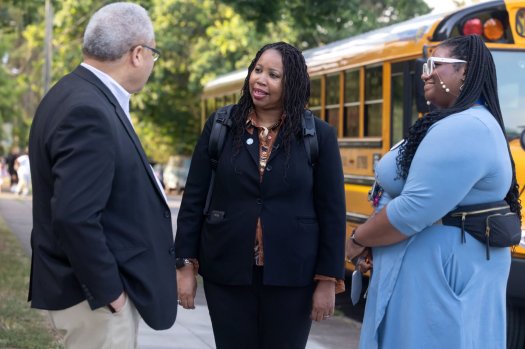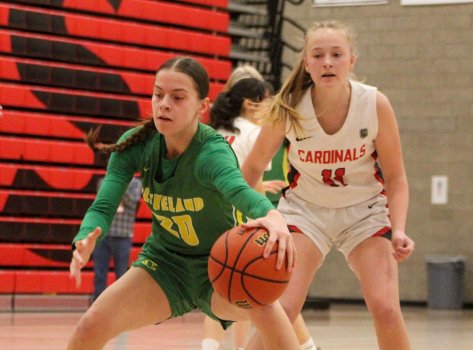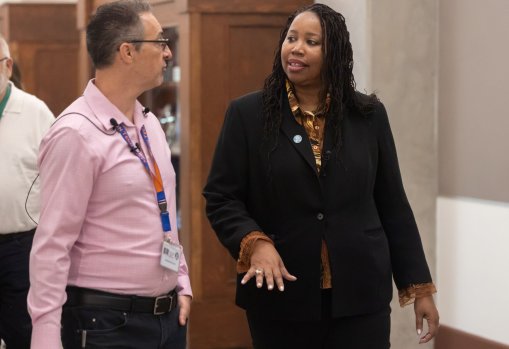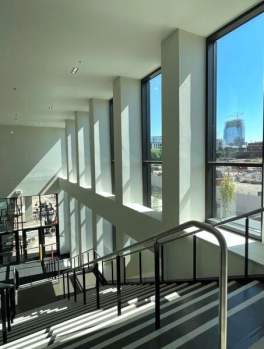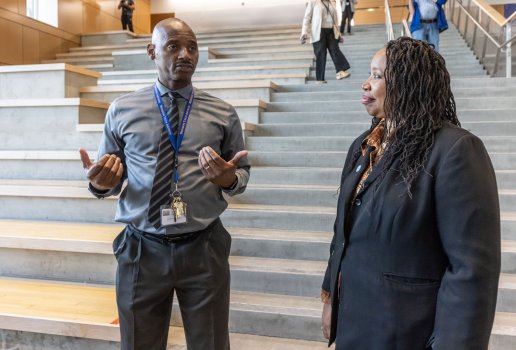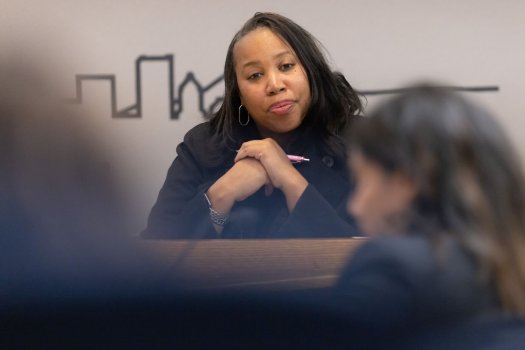Portland Public Schools superintendent answers five questions regarding May 20 bond measure
Published 8:57 am Friday, May 9, 2025
Portland Public Schools went to voters in 2012 and asked them to OK a bond measure to construct new schools, repair older ones, and buy an array of necessary equipment. Voters said “yes.”
They also said “yes” when PPS asked to re-up the bond measure in 2017 and 2020. And right now, the district is asking once again.
The Tribune asked Kimberlee Armstrong, superintendent of the district since 2024, to answer five questions about this year’s bond measure.
Armstrong began her education career teaching in the Puyallup School District in the state of Washington. She recently served as deputy superintendent of Evergreen Public Schools in Vancouver. And members of the PPS school board unanimously approved the Portland parent as the district’s superintendent almost a year ago, in June 2025.
Armstrong’s answers have not been edited.
Portland Tribune: It looks like the rebuild of Jefferson High is being delayed again, probably into 2026. This project was supposed to be funded by the 2020 bond and work was supposed to be underway now. Explain the complications that led to this delay at Jefferson.
Superintendent Armstrong: Jefferson remains a top priority for this administration. Last month, I joined the Jefferson community for a modernization meeting to discuss the challenges this project has faced. I left the meeting feeling deeply moved by the honest and sometimes painful truths shared, but most importantly by the unwavering pride and love the community continues to show for Jefferson High School.
It was not lost on me that trust has been fractured, and that disappointment runs deep. This is a community that has been asked to wait, and asked to believe in promises not yet delivered. But this is also a community that has continued to show up, speak up, and fight for what’s right for their children and their neighborhood school. That tells me everything I need to know about the community’s commitment, and it strengthens mine.
This project was originally envisioned as a major renovation of a historic building, but is now proposed as a full rebuild. Choices such as keeping students on-site during construction — which the District has heard is important to the Jefferson community — or expanding certain design elements contributed to cost escalation and extended timelines. My team has acknowledged that, in hindsight, some earlier decisions may have been made without fully understanding or clearly communicating the long-term impacts on cost and timeline.
Given the scale and complexity of the updated design, the District is working to select a new contractor that is appropriately equipped to deliver on the revised project goals. Going forward, the district is committed to greater transparency, clearer communication, and more direct engagement with the Jefferson community, ensuring that everyone understands what’s at stake and can participate meaningfully in decisions.
The bond voters passed in 2020 dedicated $366 million to the modernization of Jefferson High School. If voters pass the proposed 2025 bond, it would authorize up to $100 million in additional funding to complete the Jefferson High School modernization.
We have also heard calls for Jefferson to be a school where students from across North and Northeast Portland choose to attend, and where boundaries reflect that vision. I also want to reaffirm: Enrollment boundary discussions will begin this spring, and Jefferson is part of that first phase of work.
We’re listening. We’re learning. And we’re committed to doing right by Jefferson.

Tribune: An argument has been made that taxes in Portland are driving residents and businesses to the suburbs, which a prominent economist has described as Portland’s “doom loop.” Discuss why this is the right time to re-up PPS’s construction bond measures.
Armstrong: I came into the Superintendent role with three clear priorities: Advancing reading, building trust and relationships across our city, and improving the physical condition of our learning spaces. This proposed bond measure is central to this vision, because we cannot expect academic growth or community trust if our school buildings are unsafe or unfit for learning. Many of our schools are decades old, and have leaking roofs, failing heating systems, and outdated safety features.
Since 2012, voters have passed three Portland Public Schools bond measures that have funded improvements at every school in the district. This work on our aging school buildings has improved water quality, and provided security upgrades, new roofs, asbestos and radon remediation, lead paint stabilization, new fire alarms and sprinklers, more accessibility and seismic retrofits.
In addition, nine schools have been modernized or rebuilt: Benson, Franklin, Grant, McDaniel, Lincoln, Roosevelt, Kellogg MS, Faubion PK-8 and the new Multiple Pathways to Graduation program building. A new Jefferson begins construction in 2026 and design work is underway on new Cleveland and Ida B. Wells high schools.
But we have more work to do at many of our schools to make sure that every student has a safe, healthy, and accessible environment to learn and grow. The proposed bond would fund many of those projects if voters pass it, including the modernization of Cleveland and Wells, the completion of Jefferson, and seismic improvements at the highest-risk schools.
And because the debt service and property tax rate on the previous bond measures is declining, if voters pass this proposed bond measure, the property tax rate would be $2.50 per $1,000 of assessed property value — the same bond property tax rate the District has been targeting since 2017. The owner of a home assessed at $284,003 (the average assessed property value for residential property in the Portland Public Schools District) would pay approximately $59 per month. As with our previous bond measures, if voters pass this bond measure, there would be strong oversight, with regular public reporting and a commitment to transparency. Dollars will be tracked and community advisory committees will monitor progress every step of the way.
Some may argue that now is not the time to ask voters to consider this proposed bond, or that Portland Public Schools should do more with less. But the facts are clear: Delaying repairs only makes them more costly, and puts our children at risk. Many other Oregon districts have invested in their schools, and Portland’s students should not be left behind.

Tribune: Describe how “athletic hubs” at Jackson andMarshall high schools would function. Would these remain full educational high schools?
Armstrong: Many of our District’s high schools are on small urban sites and lack the acreage to provide the athletic facilities and fields needed to support a comprehensive high school athletics program. That’s why Portland Public Schools’ 2021 Long Range Facilities Plan calls for the development of up to three athletic hubs to meet current and future district-wide athletic needs, with fields that can accommodate football, soccer, or lacrosse, facilities for baseball and softball, artificial turf, and field lighting.
Jackson Middle School and the Marshall campus have been identified for two of these proposed athletic hubs, if voters pass the proposed bond measure. The proposed athletic hubs are separate from any academic functions at the same sites: Marshall has served as a “swing site” during the modernization of other District high schools, but is not currently in use as a high school. Jackson would continue to serve as a middle school.

Tribune: The board is considering, as late as this week, to modify the ask for voters. After voters guides have gone out and some voters have cast ballots. Can you explain this timeline?
Armstrong: On May 6, the Portland Public Schools Board unanimously adopted a resolution that clarifies how specific seismic improvement projects and other capital improvement projects in our elementary and middle schools would be prioritized if voters pass the proposed bond measure. This resolution outlines clear criteria and a plan for the District’s approach to seismic retrofits that would ensure limited resources address the highest-risk buildings first.
However, I want to be clear: the proposed bond’s fundamentals have not changed; the language voters see on their ballots notes that seismic upgrades are one type of project that could be funded if voters pass the measure, in addition to other building, health, safety, and learning priorities in schools across the District. And the proposed property tax rate and total principal amount of general obligation have not changed.

Tribune: PPS is projected to lose enrollment in coming years. Does consolidating high schools make sense? Also, have the wonderfully improved schools like Lincoln drawn back students who had left PPS? Is there evidence that, if you build it, they will come?
Armstrong: The enrollment projections are just that — projections. And they have been wrong before. The latest five-year projection does show a decline in enrollment, but does not make a confident projection beyond five years.
It’s important to remember that we’re not building schools for the next five years — we’re building schools for the next hundred years. There’s a risk in building schools too small. This happened at Roosevelt High School: Enrollment was around 900 before the District broke ground to modernize the school. The modernized Roosevelt opened in Fall 2016 with space for 1,350 students, but the District has since expanded it several times to serve around 1,600 students. That experience has taught us that it is more efficient to build to capacity the first time around. And Roosevelt isn’t the only recently modernized high school that saw enrollment increase: Lincoln, Grant, Franklin, McDaniel and Benson High Schools all saw enrollment go up when the new facilities opened.
At the same time, the District needs to use resources effectively across all campuses. We will be launching an enrollment and boundary review process in late spring, likely beginning in June 2025, once new Board members are seated and after voters have had an opportunity to consider the proposed 2025 bond measure. There will be an open call for community members to join the committee leading this work.
This process will include a review of high school boundaries, as well as program placement and boundaries across K–12 sites. The goal is to right-size and optimize enrollment, while aligning district resources more effectively.


